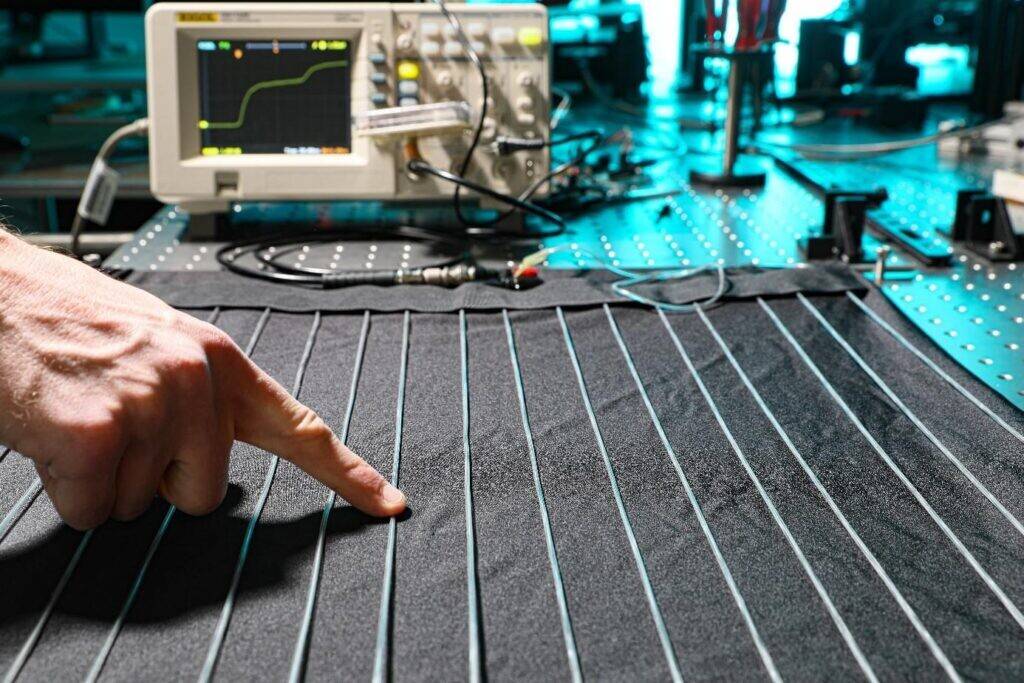Smart textiles that measure health parameters
Electronic fibers, when embedded in textiles, can collect a wealth of information about our bodies by measuring subtle and complex fabrics deformations. This new technology developed by researchers from the Swiss Federal Institute of Technology Lausanne offers a host of applications, such as in health care and robotics. A soft fiber-shaped sensor that works similarly to radar can detect different kinds of fabric deformation, such as stretch, pressure, and torque.
"Imagine clothing or hospital bedsheets capable of monitoring your breathing and other vital movements, or AI-powered textiles that allow robots to interact more safely and intuitively with humans," says Andreas Leber, a doctoral assistant at the Laboratory of Photonic Materials and Fibre Devices (FIMAP) in EPFL's School of Engineering.
The researchers published a study in Nature Electronics, "Soft and stretchable liquid metal transmission lines as distributed probes of multimodal deformations."

Measurement of hemoglobin levels in a non-invasive way, by taking a picture
Software that would enable medical staff to take a picture of a patient's inner eyelid with a smartphone to receive a near-accurate count of hemoglobin, a protein in red blood cells – this is the latest innovation introduced by the Purdue University engineers.
Now the team is working on embedding the software into a mobile app. The app could help bring sooner diagnoses and treatment or allow a person to better manage a blood disorder from home. It app also would help clinics in developing countries to better treat patients without the infrastructure to provide blood tests.
The technology called "spectroscopic analysis" detects hemoglobin by the specific way that it absorbs visible light. The resulting spectrum of light signals accurately gives a measure of blood hemoglobin content.
How does the spectroscopic analysis in assessing anemia work? Watch the video:
Printed tattoo electrodes that work as a long-term EEG monitor
A researcher from TU Graz has developed ultra-light and transparent tattoo electrodes that, when applied on the head skin, can make long-term measurements of brain activity. This miniaturized electroencephalography is cheaper and more comfortable compared to classical EEG monitoring. The electrodes work even if hair grows through the tattoo causing small cracks. This innovation could find various applications in neurology.
In 2015 Francesco Greco, head of the Laboratory of Applied Materials for Printed and Soft electronics (LAMPSe) at the Institute of Solid State Physics at the Graz University of Technology, developed so-called "tattoo electrodes" (inkjet printing of conductive polymer on tattoo paper) together with Italian scientists. These are conductive polymers that are printed using an inkjet printer on standard tattoo paper and then stuck to the skin like transfers to measure heart or muscle activity.
Recently, the researchers have modified the tattoo electrodes in such a way that they can also be used in electroencephalography (EEG) – i.e., to measure brain activity. Tests under real clinical conditions have shown that the EEG measurement with the optimized tattoos is as successful as with conventional EEG electrodes.
What are tattoo electrodes? Watch the video:
